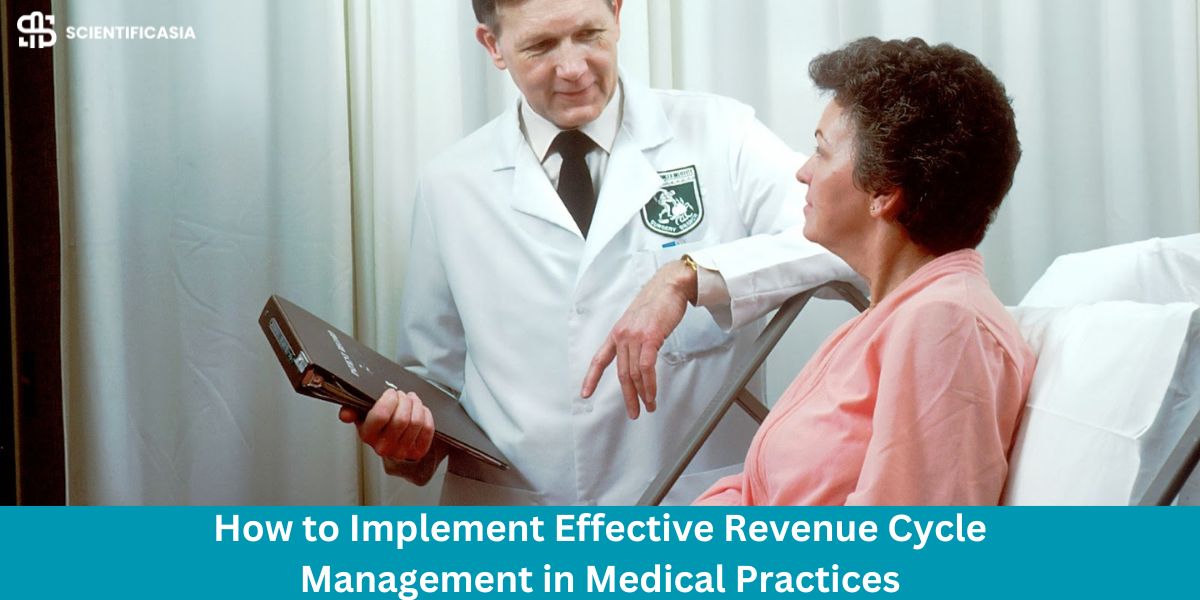You’re a doctor. You’re a dentist. You’re a physical therapist. You should have all the money. That’s what people think, isn’t it? What most people don’t understand is that medical practices of any sort are a business, and they have to be treated like one.
Revenue cycle management (RCM) is a big deal for the financial health of facilities in this industry. That’s why today we’re going to explore some strategies to enhance RCM. We’ll cover automated billing, error reduction, and patient engagement through electronic health records (EHRs).
Whether you manage a small clinic or a large practice, optimizing RCM can streamline operations and boost revenue. Read on to discover practical tips and actionable steps to improve your practice’s financial performance.
What is Revenue Cycle Management in Medical Practices?
Before we get too deep into RCM, we should probably break it down for anyone who isn’t familiar with this term.
Revenue cycle management is the financial process used to manage patient service revenue.
It encompasses everything from scheduling appointments and verifying insurance to billing patients and collecting payments. Effective RCM gets your practice paid promptly and accurately for the services it provides.
Medical practices need robust RCM strategies to remain profitable with rising operational costs and complex insurance protocols. Now, let’s get into it.
Strategies for Implementing Automated Billing Processes
Automated billing processes can revolutionize revenue cycle management by reducing errors and increasing efficiency. Integrating a virtual medical assistant can further streamline billing operations by automating tasks like insurance verification and payment processing. This integration reduces administrative burdens, allowing healthcare providers to focus on patient care while maintaining financial stability.
Here are key strategies to consider:
Invest in RCM Software: Choose software that integrates with your existing EHR system to automate billing tasks. There are specialized solutions that range from physical therapists to podiatry EMR software. These tools reduce manual work and increase accuracy.
- Automate Patient Communications: Automated systems send appointment reminders, billing statements, and payment confirmations. They save time and improve patient engagement and payment compliance.
- Implement Real-Time Eligibility Verification: Automate the insurance verification process for patients during scheduling. You will see a reduction in claim denials. Even better, patients will be informed of their financial responsibilities upfront.
Techniques for Reducing Errors in RCM
Errors in revenue cycle management lead to claim denials, delayed payments, and compliance issues.
Here are three techniques to nip these issues in the bud and improve RCM efficiency:
- Standardize Data Entry Procedures: Establish clear guidelines for data entry for better consistency and accuracy. Train staff on these procedures to catch errors.
- Conduct Regular Audits: Regular audits identify and rectify billing and coding errors before they lead to claim denials. Use the findings to refine processes and provide targeted training.
- Leverage Artificial Intelligence (AI): Because everyone else is using AI! Why aren’t you? Kidding. Mostly. AI-powered tools analyze billing data to detect patterns and anomalies. They’re great for tedious tasks like this.
Patient Engagement and Electronic Health Records (EHRs)
Patient engagement is a major component of effective revenue cycle management. Engaging patients through electronic health records (EHRs) improves communication, increases payment compliance, and enhances overall satisfaction.
Boom! Can we get a mic drop?
Here are three ways to leverage EHRs for better patient engagement:
- Provide Access to Patient Portals: Use EHR systems to offer patient portals where people can view their health records, billing statements, and payment options.
- Send Automated Reminders and Notifications: EHR functionalities will send automated reminders for appointments, billing due dates, and preventive care services. Patients stay informed. They also miss fewer appointments and are more inclined to make payments on time.
- Offer Online Payment Options: Integrate secure online payment systems with your EHR. It makes life easier for everyone. Offering multiple payment methods, such as credit cards and electronic funds transfers, can also improve payment compliance.
Conclusion
Effective revenue cycle management turns your business from just another medical practice into a finely tuned business.
Implementing automated billing processes, reducing errors, and leveraging patient engagement through EHRs allows practice owners to streamline operations and improve revenue. As much as you got into this profession to help people, you still need to do things to help yourself.
The right RCM system allows medical practitioners to focus more on delivering quality care and less on administrative burdens. The result? A fully optimized business.
FAQs
How should the management of the revenue cycle be assessed?
The most effective way to gauge the success of revenue cycle management is through KPIs. Data will show where healthcare professionals are excelling and where they still have room for improvement. Some of the most significant KPIs are as follows: Avoidable write-offs expressed as a proportion of income.
What is the revenue cycle’s final step?
Patient gatherings: Patient collections are the last phase of the revenue cycle. Following the application of insurance payments, this stage entails obtaining any unpaid amounts from the patient.
Which of the following describes a revenue cycle objective?
Providing the right product at the right price at the right location at the right time is the main goal of the revenue cycle.









